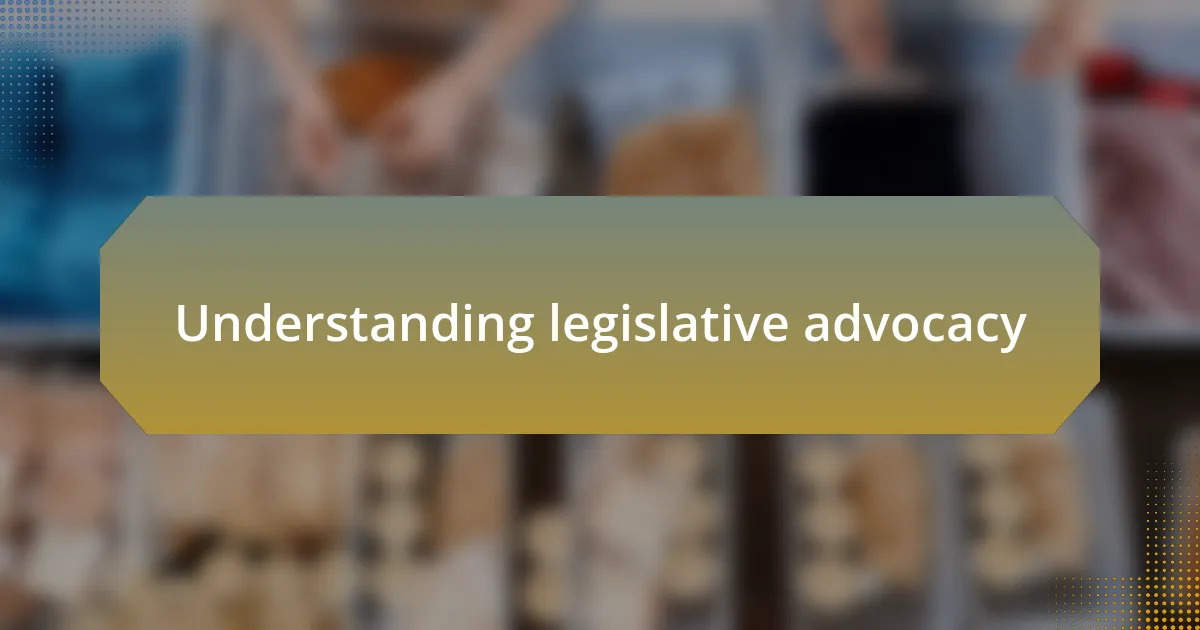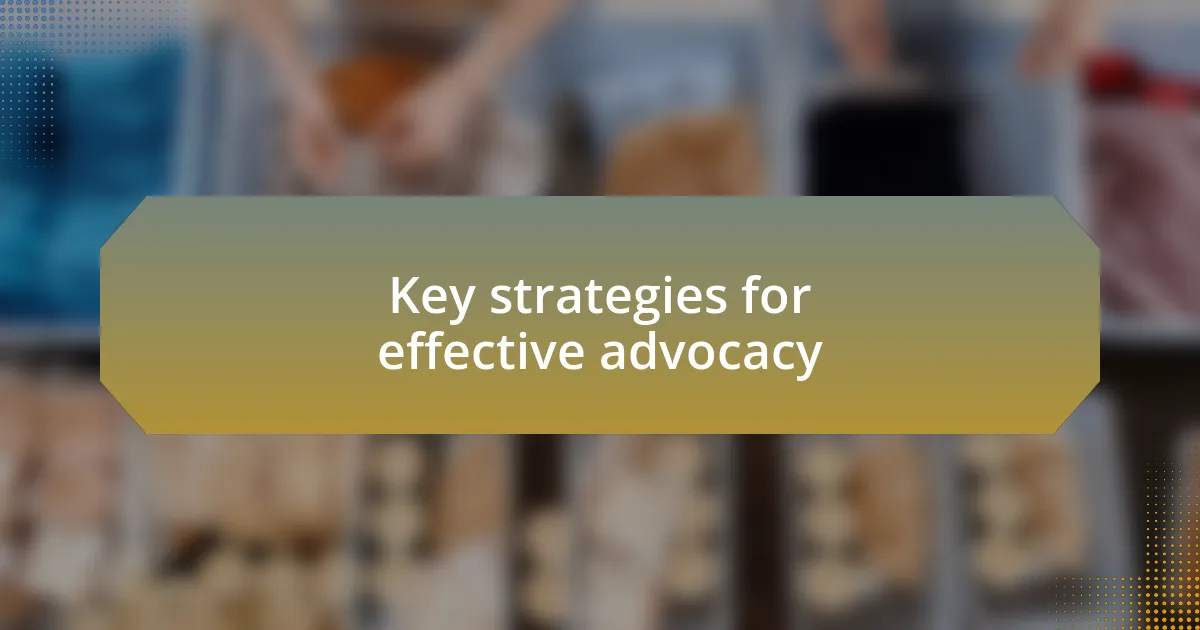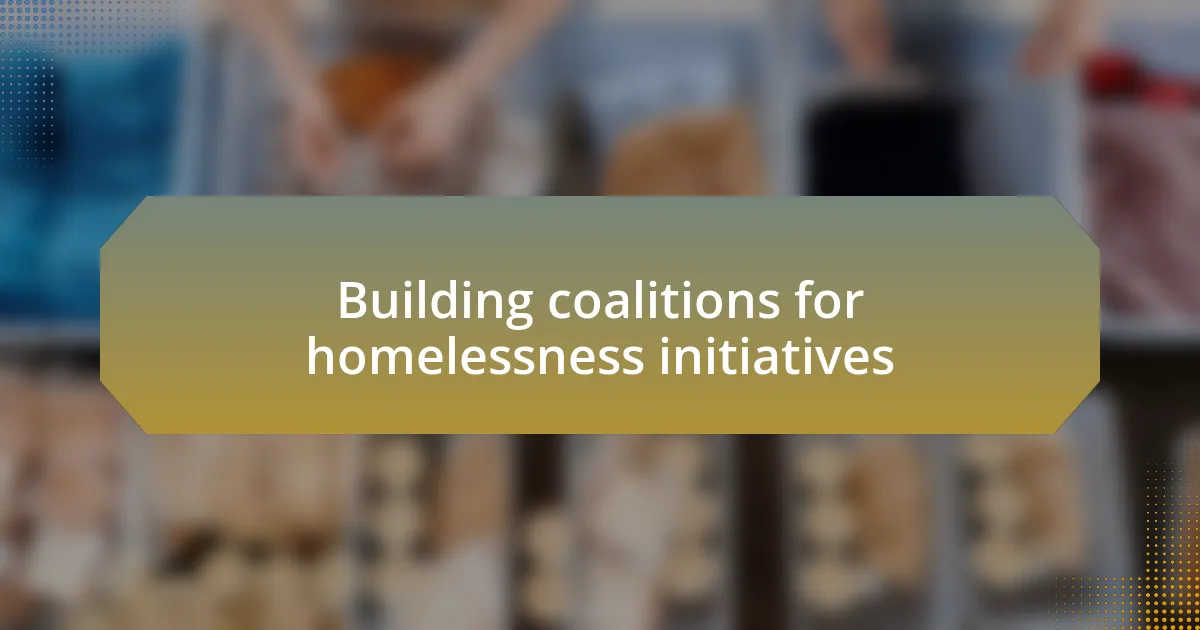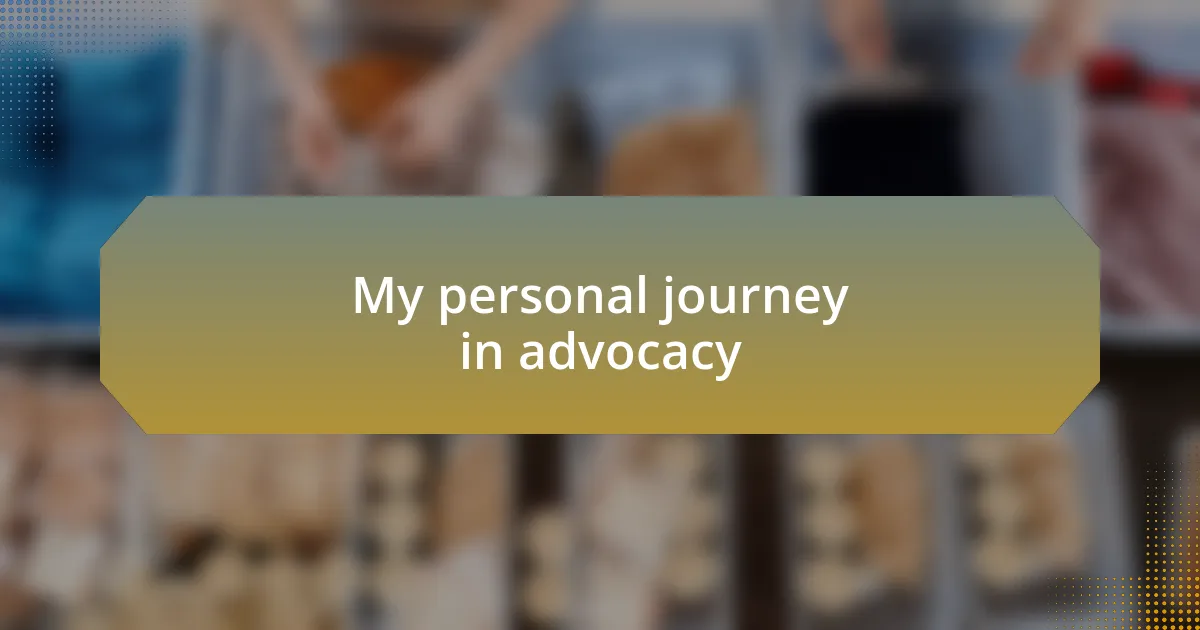Key takeaways:
- Legislative advocacy is about influencing lawmakers through personal stories and collective action, emphasizing the real lives affected by policies.
- Building strong relationships with lawmakers and mobilizing community support are crucial strategies for effective advocacy.
- Diversity within coalitions enhances effectiveness in addressing homelessness, while open communication fosters teamwork and accountability.
- Advocacy involves listening to community members, incorporating their voices, and ensuring their experiences shape policy efforts.

Understanding legislative advocacy
Legislative advocacy is fundamentally about influencing lawmakers to make decisions that align with the needs of those we serve. I remember attending a local council meeting where community members passionately shared their stories about homelessness. Those moments truly hit me; it wasn’t just about the policies, but the lives impacted by those policies.
When I first dived into legislative advocacy, I found myself asking, “How can my voice make a difference?” It felt daunting, but I quickly realized that each small action—like reaching out to legislators or attending town halls—adds up to create a larger impact. Connecting with others who shared the same passion really underscored the collective power we have to bring awareness to critical issues.
It’s fascinating to see how legislative advocacy operates at the intersection of lived experience and policy change. I recall a specific campaign where we pushed for increased funding for homeless services. It was rewarding to witness how our collective efforts brought tangible changes, reminding me that advocacy is a process of transforming passion into action—one conversation, one meeting at a time.

Key strategies for effective advocacy
One key strategy for effective advocacy is building strong relationships with lawmakers. I recall a time when I set up a face-to-face meeting with a state representative. It wasn’t just about presenting statistics; it was about sharing heartfelt stories from individuals experiencing homelessness. That genuine connection made a lasting impression, and I left feeling hopeful that we were on the path to real change.
Another approach is mobilizing community support. I’ve seen firsthand how grassroots campaigns can amplify our voices. When we organized a public forum to discuss homelessness, it was incredible to witness how the community rallied together to share their experiences and suggestions. It made me realize that when people feel that their voices matter, they are more likely to engage in advocacy efforts that resonate deeply within the community.
Lastly, leveraging social media as a platform for advocacy can be transformative. I remember launching a social media campaign highlighting local success stories related to homelessness services. Watching those stories go viral not only drew attention but also fostered discussions that stretched beyond our community’s borders. It made me wonder—how many lives could be impacted by simply amplifying stories of hope and resilience? It became clear that each tweet, post, or share can be a powerful tool for outreach and education.

Building coalitions for homelessness initiatives
When building coalitions for homelessness initiatives, I’ve learned that diversity is our strength. During one campaign, we brought together not just nonprofits but also local businesses and advocacy groups. Each partner added unique perspectives and resources, leading to a more holistic approach. How could we truly tackle homelessness without a united front?
In my experience, maintaining open communication within the coalition is essential. I once participated in monthly meetings where all voices were encouraged. It was in those moments of sharing challenges and celebrating small wins that we bonded as a team. I found that our collective passion made us more effective—after all, we were in this together for a shared cause.
Moreover, collaboration means aligning our goals and visions. One initiative involved creating a shared action plan that clearly defined each member’s role. The clarity fostered accountability and enthusiasm among the coalition members. It seemed so clear to me—when we work together, we can create solutions that resonate deeply with the community and genuinely address the complexities of homelessness.

My personal journey in advocacy
Advocacy has been a transformative journey for me. I still vividly recall my first experience standing before a city council, nervously clutching my notes. It felt surreal to voice the struggles of individuals experiencing homelessness—people whose stories resonated so deeply with my heart. In that moment, I realized that my words had the power to inspire change, igniting a passion I never knew existed within me.
One particular encounter stays with me. I met a young woman who had fallen through the cracks of the system. Sharing her story was both heartbreaking and enlightening; it was a stark reminder of why I advocate. As I listened to her articulate her dreams and fears, I couldn’t help but think: what if it were me? That moment solidified my commitment to fighting for policies that prioritize the dignity and worth of every individual experiencing homelessness.
Over time, I learned that advocacy is not just about speaking; it’s about listening and acting. Each interaction with community members provided insights that shaped my approach. I often reflect on how vital it is to incorporate their voices into the legislative process. It begs the question: how can we advocate effectively if we don’t truly understand the people we aim to serve? This journey continues to mold my perspective, fueling my dedication to ensure that no voice goes unheard in the fight against homelessness.